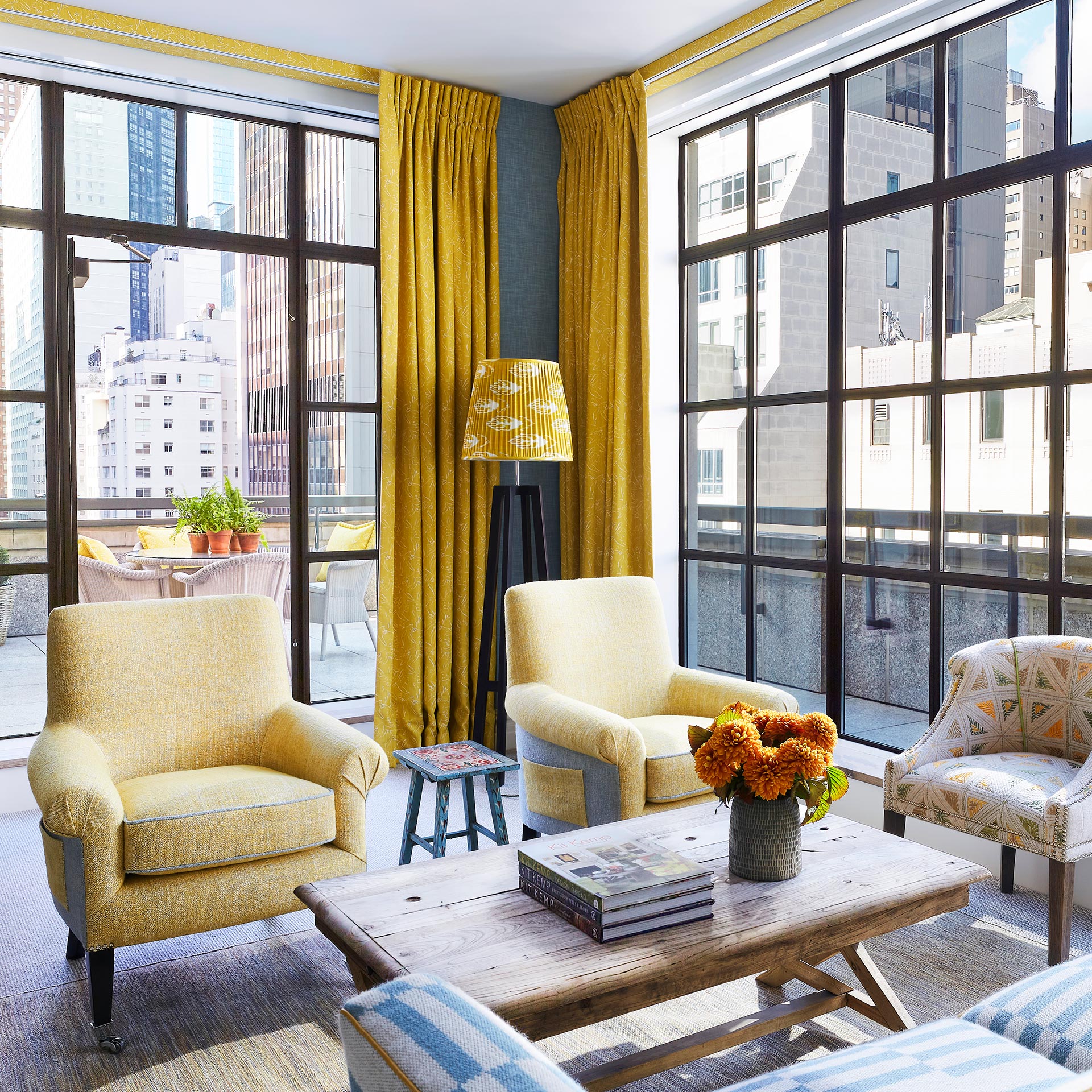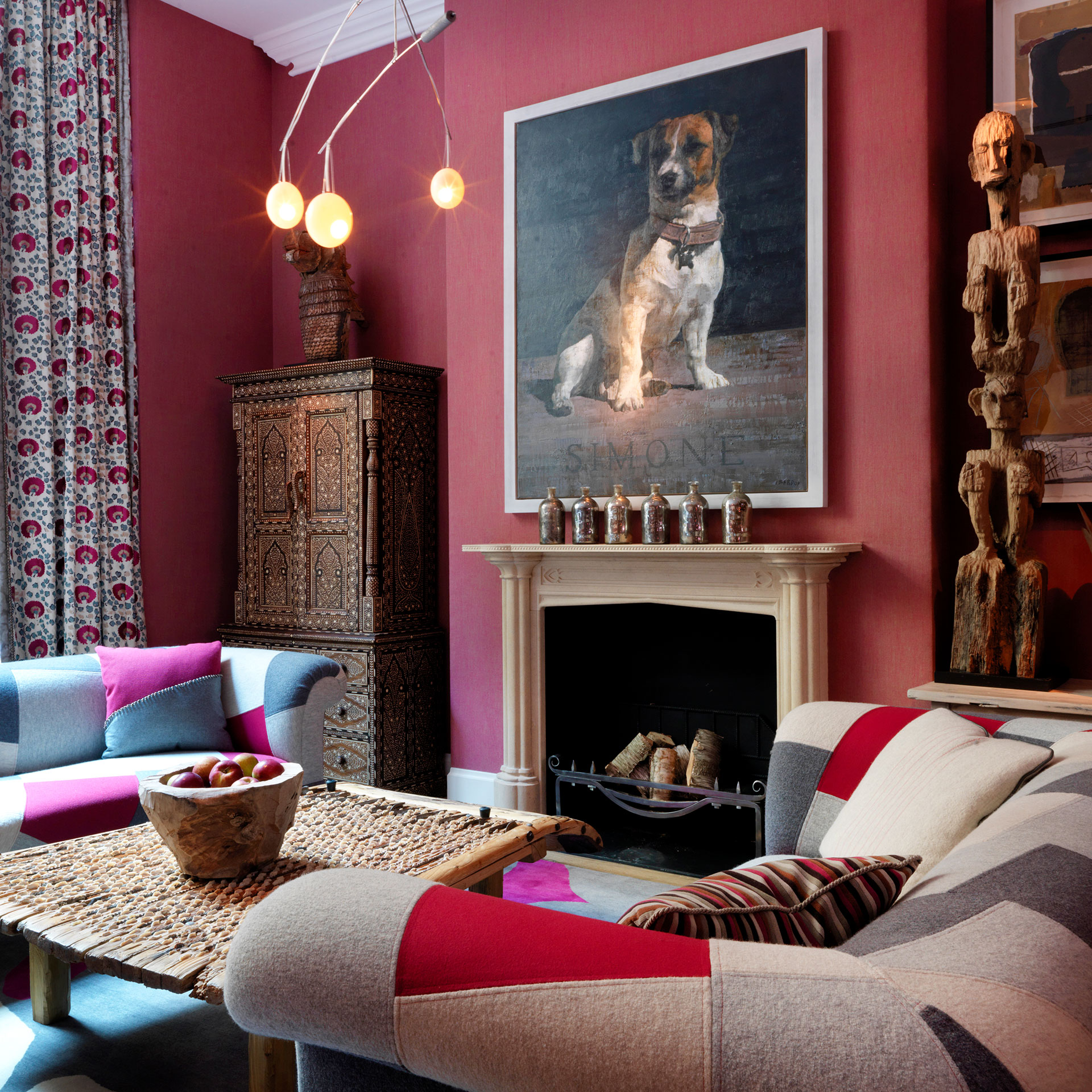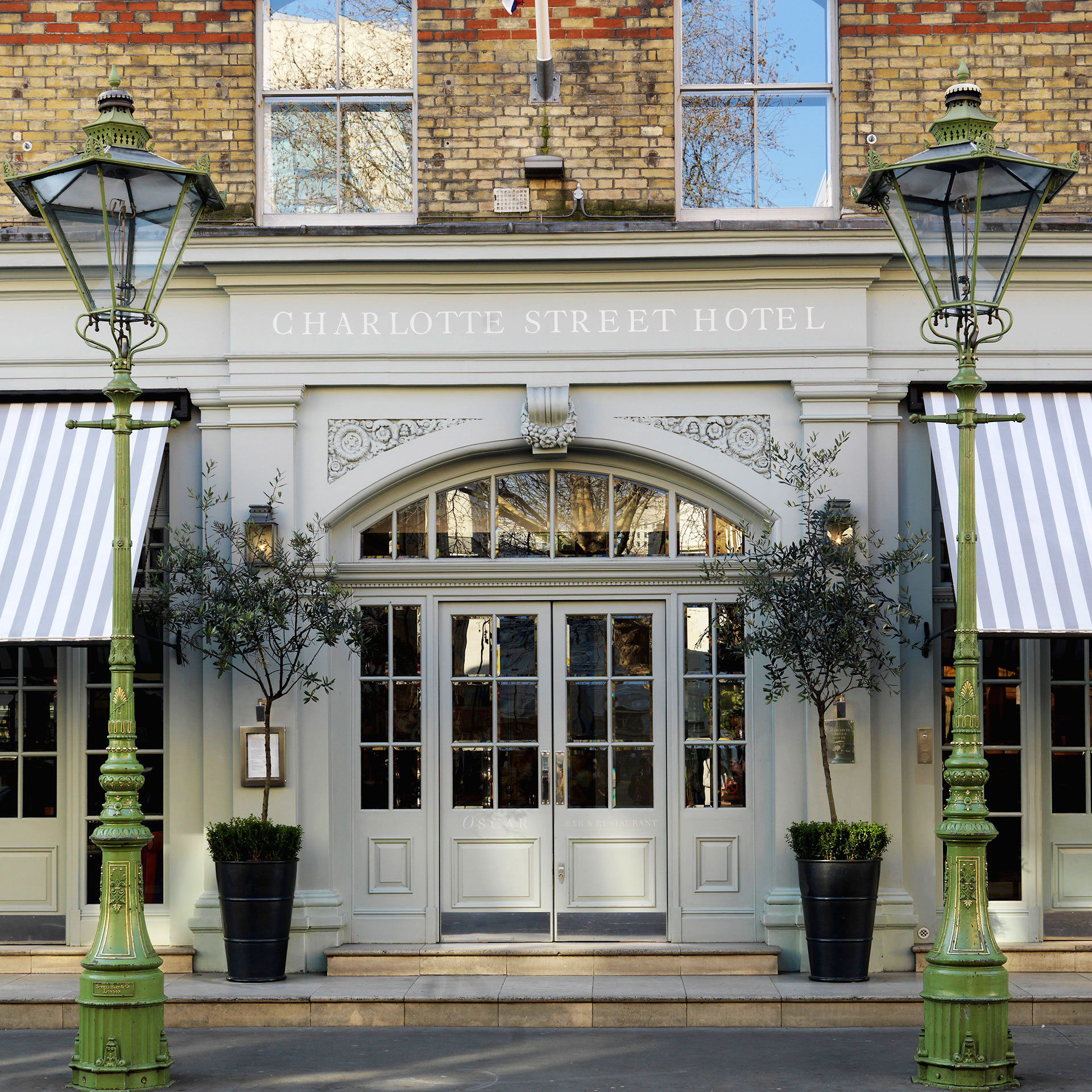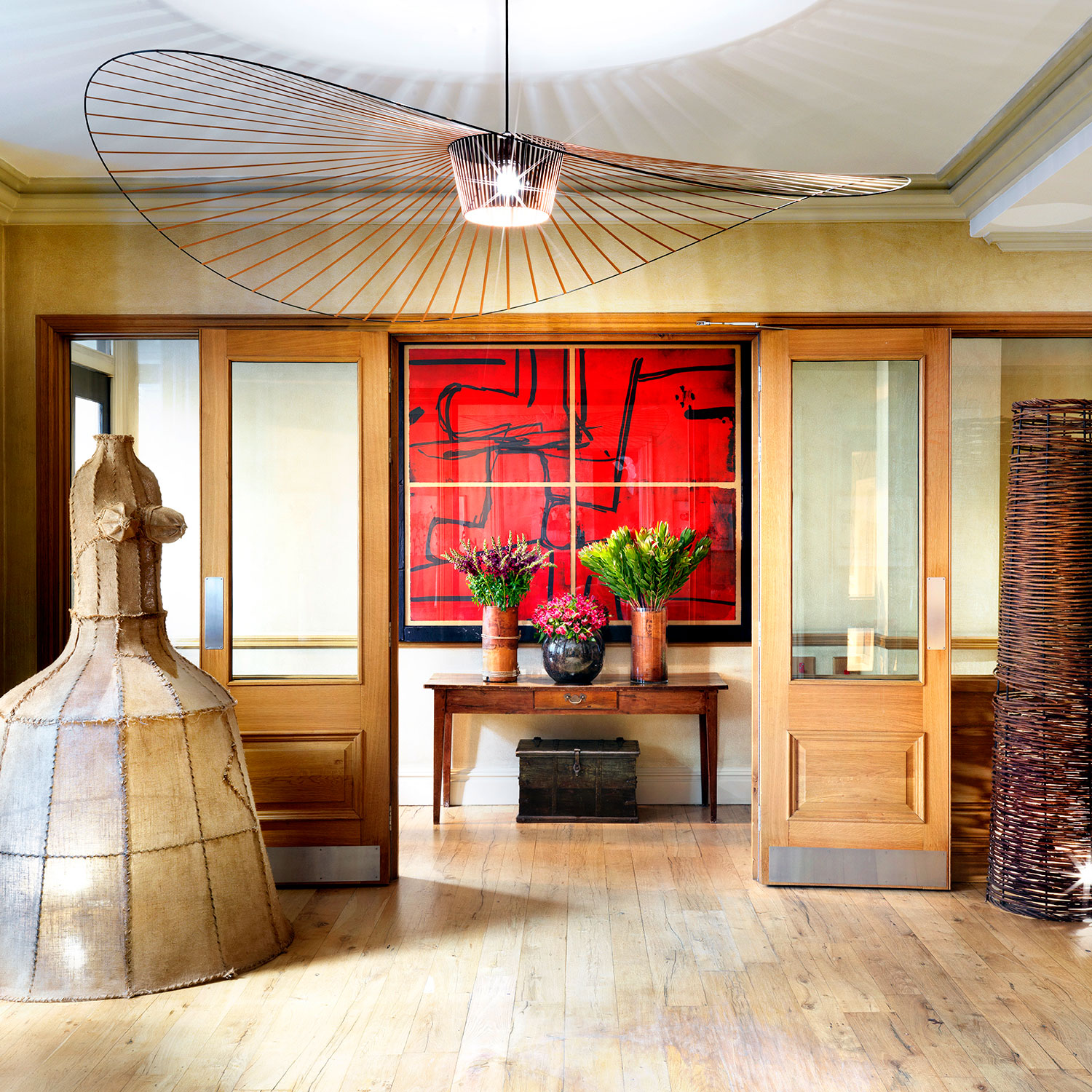
“Take Your Daughter to Work Day” hits different when work that day is at the Whitby, and when it’s her first time ever staying in a hotel. But not just any hotel — the Whitby is a Firmdale hotel.
My daughter had never been in a hotel before. She’s not yet five, but considering I write about hotels for a living, it’s at least a little surprising. So when we needed to kill a couple days during her spring break from the pressures of pre-K, I figured, now’s the time.
I decided to treat us to something special: two nights at the Whitby Hotel in midtown Manhattan. Frankie loves the subway, so it was a nice commute from our apartment in Brooklyn. She’s also a fan of the Eloise books, so I knew she’d enjoy the pageantry of the Whitby’s afternoon tea. I’m a fan of the Sopranos, and hoped our Manhattan tea date went better than that time Carmela dragged Meadow to the Plaza.
At check-in, I saw a couple celebs milling about. The Whitby is the kind of place where celebrities feel comfortable milling about. A former SNL cast member seemed amused by the sight of Frankie giving her stuffed bunny a tour of the lobby. Our reservation was for a room type usually located on a lower floor. So when I was told we were in room #1600, on the 16th floor, I was excited that we’d be getting a better view than expected. Then I saw that the elevator didn’t go any higher than 16.
This is where I tell you that yes, sometimes in this job you get upgrades. Usually that means a nice one-bedroom suite or a bottle of champagne. Sometimes — rarely, but sometimes — it means the Whitby Suite, a nearly 2,000-square-foot pleasure palace that takes up the entire top floor of the Whitby Hotel.
The elevator opened onto a private foyer lined with bookshelves. Private foyers are always a good sign. It felt like an episode of Succession, and I was about to be ushered into Logan Roy’s Upper East Side townhouse (I promise this post is not sponsored by HBO). I unlocked the only door, #1600, and was immediately bowled over. My daughter quickly recognized how cool this all was and barked a wide-eyed “wow!” as soon as she stepped inside.
The first words out of my mouth were “Frankie, not every hotel stay is like this.”

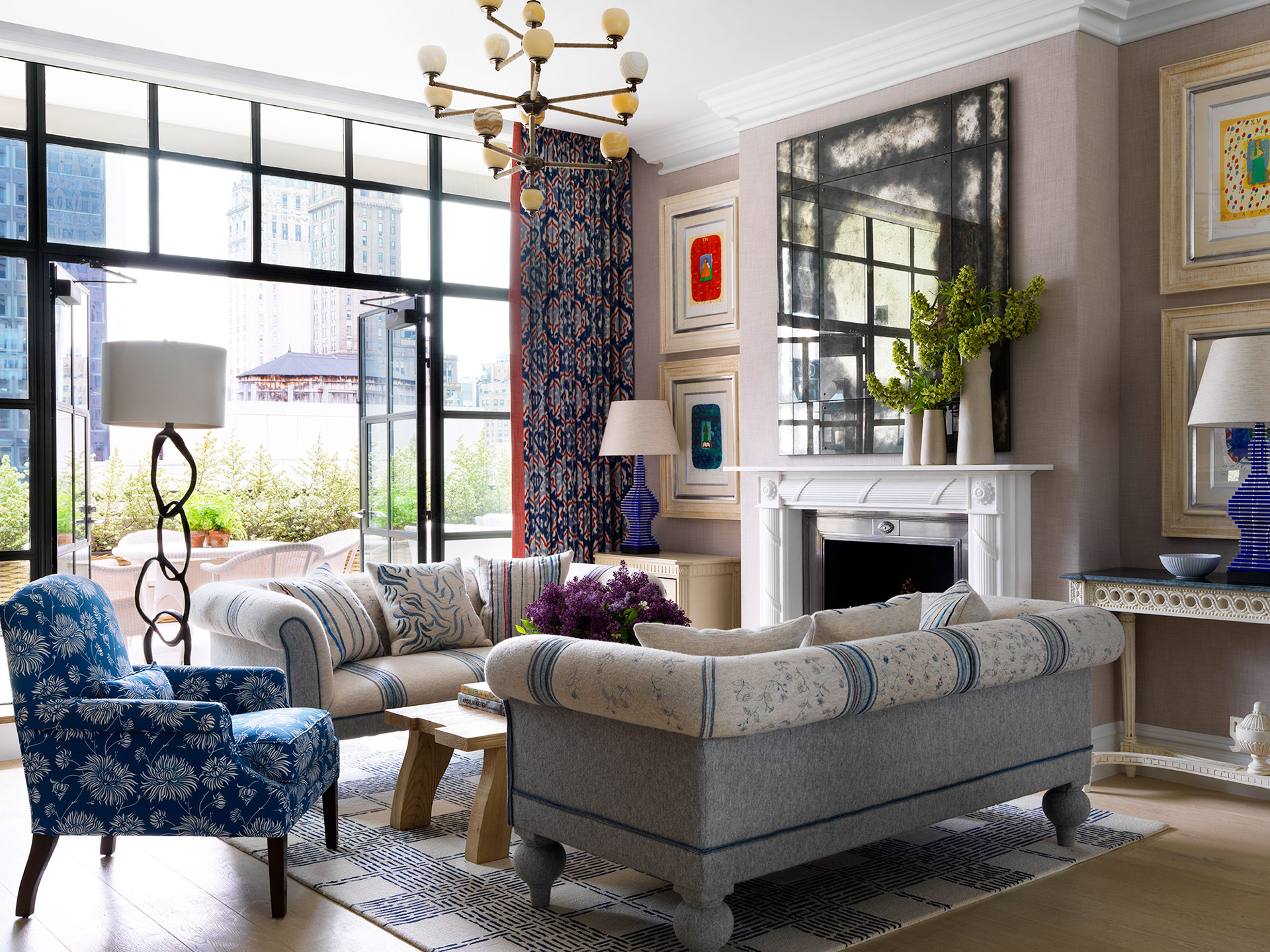

Not every hotel stay will be in the penthouse suite, but every hotel stay should feel special. The job of a great hotel is to provide you with an elevated, uncommon living experience. When you open the door to your room you should be delighted with what you find, just like I was. It’s not all about size either. I won’t downplay how exciting it was to be in the Whitby Suite, but I will say that I’ve stayed in large hotel rooms where the extra space was totally wasted — where it felt like the hotel had no idea what to do with it, and neither did I. And I’ve stayed in compact rooms that were ingeniously conceived and brimming with energy, begging you to engage with every nook and cranny.
Space is important, but it’s more important to have a designer who knows how to use it.
The Whitby is a Firmdale hotel. There are eleven hotels in the Firmdale group. Eight in London and three in New York (including the firm’s latest, the Warren Street Hotel). They were created by Tim and Kit Kemp, the latter an interior designer with an intensely personal vision that marries eccentricity and sophistication. Her style is a riot of pattern and color that somehow never clashes and feels both classic and contemporary at the same time. As someone whose design tastes once tilted toward the sparse and industrial, Firmdale’s house style didn’t initially appeal to me. When I first experienced it in person, though, my preferences recalibrated.
Not long after Firmdale launched in the ’80s, hotel design began a trend toward minimalism. It’s made it easy to think of Kemp as a maximalist. She’s really a master of restraint. To play so boldly with patterns, colors, and textures and to know where to stop is perhaps her most impressive gift. Her subtle use of symmetry brings an additional layer of order. Firmdale interiors are fun and engaging, with none of the imposing heft you might expect from traditional luxury in London and Manhattan. Kemp’s approach is welcoming, winking away any upper-crust seriousness. There’s even a bit of an industrial vibe, thanks to the steel-framed warehouse-style windows found in many Firmdale rooms.
It was all enough to melt my cold, concrete-loving heart.
A changed man, one reason I chose the Whitby for my daughter was to get back into Kemp’s comforting hands. Another was the service. For Frankie’s first-ever hotel stay, my wife and I wanted to spoil her, and very few hotels spoil their guests better than Firmdale’s. Beyond afternoon tea, which was a resounding success (Frankie loved the tower of treats), we took ample advantage of room service and of Firmdale’s excellent amenities for families, like kids’ bath robes, slippers, and toiletries, a clever Whitby coloring book, a menu tailored to a child’s diet, and a stuffed welcome gift that quickly rivaled Bun-Buns for my daughter’s affection.


It’s easy for us to write about architecture and design, since those can be accompanied by arresting imagery. More challenging is to describe service in a way that captivates and doesn’t come across sounding like a passage from a bad romance novel. Also, it’s not always relevant; there are perfectly great hotels that intentionally limit their amenities, and perfectly reasonable guests who don’t plan to use a hotel for much more than sleeping.
There are times, though, when you want to indulge yourself, and the main selling point of the best luxury hotels is their ability and willingness to meet your needs. That’s what you’re promised. That’s what you pay for. That’s what we all deserve from time to time. The Whitby didn’t have to put us in their penthouse. They have a number of other suites with outdoor terraces and multiple bedrooms that we would’ve been incredibly grateful to stay in. But it’s in their DNA to delight, and to go out of their way for guests.
Not every hotel is like that.
The Whitby Hotel
New York City
The Whitby Hotel brings the warmth and coziness of English hospitality to Midtown, a neighborhood that’s already got plenty of American-style luxury hotels, proving that Firmdale can compete with anyone in the world on comfort, while looking just that much more stylish and charming while they’re at it.
Crosby Street Hotel
New York City
Crosby Street is exactly the kind of hotel New York City needs. The contrast between the downtown grit of the cobblestone street outside and the plush sophistication of the hotel’s lobby is immediate, and striking. Say what you will about the bright colors and the decidedly un-minimal décor — it’s a rare New York boutique these days that presents so opinionated a face to the world.
Warren Street Hotel
New York City
The inimitable Kemp style continues to evolve. Warren Street was designed by Kit and her daughters Willow and Minnie, and the result is somehow even more packed with pattern, texture, and color than ever — in stark contrast with the minimalist styles that once defined Downtown Manhattan style. Each of its 69 rooms and suites is unique, though obviously cut from the same vast and eclectic collection of cloth.
Charlotte Street Hotel
London, England
The setting for the Charlotte Street Hotel is Bloomsbury, and the interiors pay plentiful tribute to the neighborhood’s cultural heritage, displaying original artworks by the storied Bloomsbury Set themselves. You’re equidistant from the British Museum and the theatres of the West End, so if you leave without taking in a bit of culture, it’s nobody’s fault but your own.
Covent Garden Hotel
London, England
On a narrow side street in the bustling and chic Covent Garden district of London’s West End, this splendidly theatrical small hotel’s exclusive atmosphere and central location make it the perfect London pied-à-terre for visiting actors, professional shoppers, and savvy yet indulgent travelers. The opera house and the theatre district are close by, as are the West End’s best shops and boutiques.
Dorset Square Hotel
London, England
Longtime Kemp-watchers — there must be more than a few of you out there — might remember that the Dorset Square Hotel was Tim and Kit’s first venture, a sort of rough draft for their extremely successful Firmdale Hotels brand. It was eventually sold off, but not forgotten — now a decade and a half later it’s back in the Firmdale fold, and there’s nothing at all rough about it.
Ham Yard Hotel
London, England
A ground-up redevelopment of a little side street in Soho, Kit and Tim Kemp call Ham Yard an “urban village.” And not without reason. For alongside a fairly substantial hotel, there’s also retail space, a restaurant and lounge, a rooftop garden, a 176-seat cinema, and a four-lane bowling alley, all along a charming pedestrian thoroughfare complete with a bronze sculpture and a fair bit of greenery.
Haymarket Hotel
London, England
As expected, the Haymarket Hotel comes with its share of public and semi-private places — a conservatory, a drawing room, a private dining room — as well as a fine restaurant serving brasserie-style modern English cuisine, and a full-service spa. Where it steps out ahead of its sisters, however, is downstairs, where you’ll find an 18-meter swimming pool, complete with a poolside bar and a booming sound system.
Knightsbridge Hotel
London, England
The Knightsbridge Hotel is the perfect modestly priced entrée into one of the most expensive neighborhoods in the world. In fact the Knightsbridge is the ideal shopper’s hotel, a sort of junior version of its sisters, Covent Garden and Charlotte Street, with a correspondingly lower nightly rate, leaving plenty of room on the credit cards for expeditions to Harrods and Harvey Nichols, as well as the shops of Sloane Street and Brompton Cross.
Number Sixteen
London, England
Number Sixteen is either the coziest boutique hotel in London, or the most luxurious bed and breakfast — we’re still not sure. The location, down a sleepy side street in South Kensington, is fairly well hidden; just a row of nineteenth-century Victorian townhouses without so much as a sign to show the way. As a member of Firmdale’s Townhouse Collection, it’s a more low-key experience than the bigger, more lively Ham Yard or Soho Hotel.
The Soho Hotel
London, England
London’s Soho Hotel is impossibly glamorous, a luxury boutique that is at once classic and original — classic in the now-familiar London sense of overstated and outsized comfort, robust and enveloping furnishing and fixtures (as compared to the papier-mâché set construction in lesser boutiques) and original in its avoidance of worn-out tropes like featureless white rooms, cheap ‘Zen’ minimalism and off-the-rack hotel-standard furniture.

Mark Fedeli is the hotel marketing and editorial director for Tablet and Michelin Guide. He’s been with Tablet since 2006, and he thinks you should subscribe to our newsletter.


